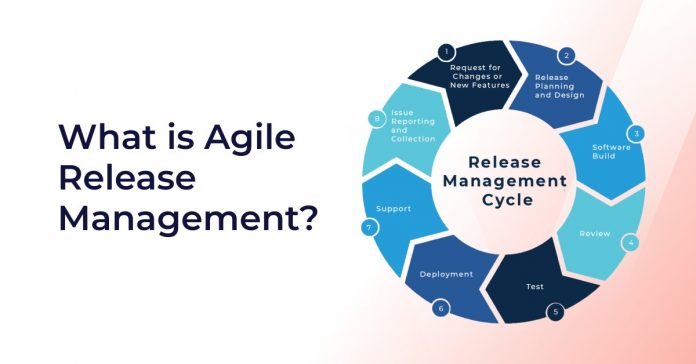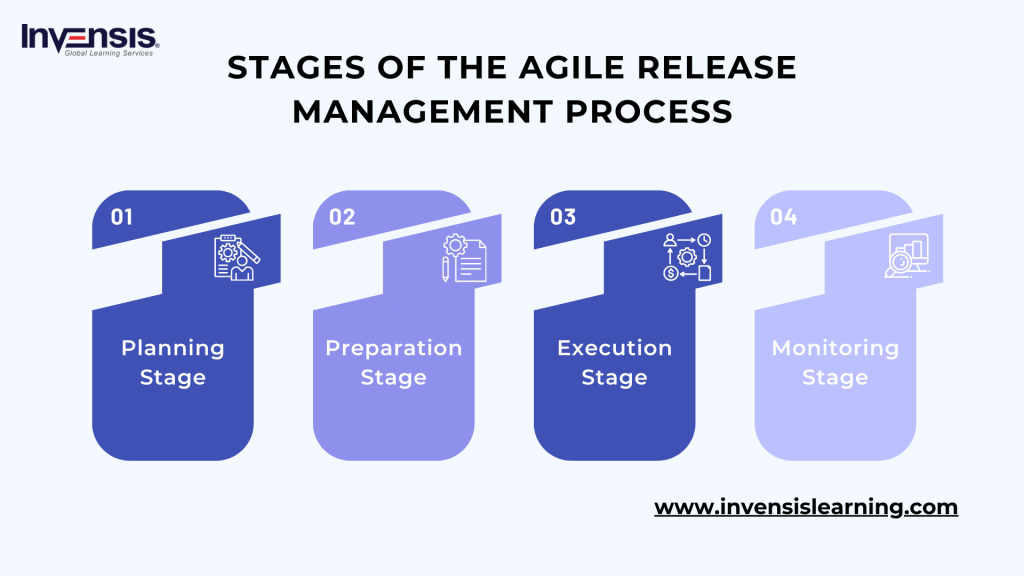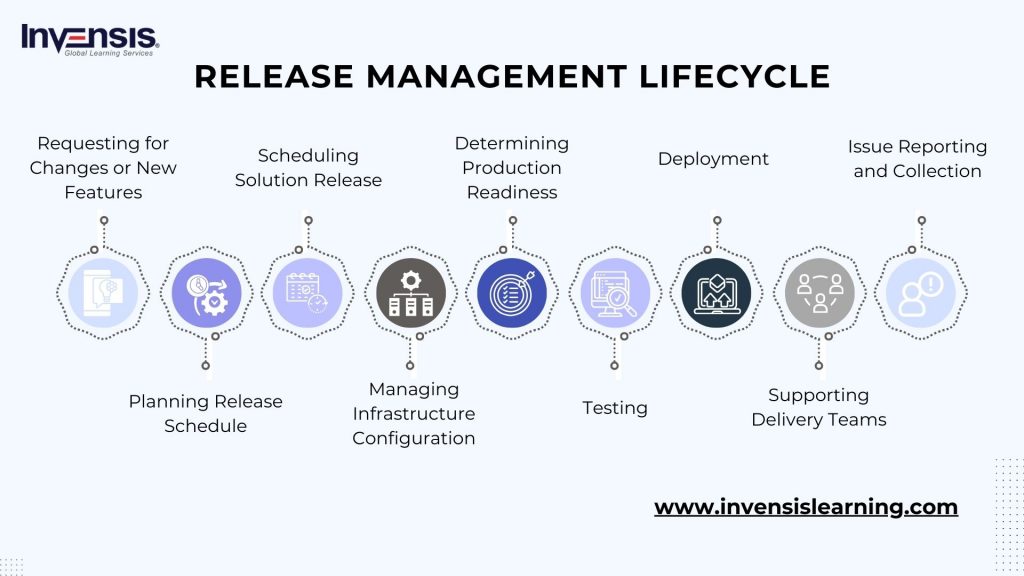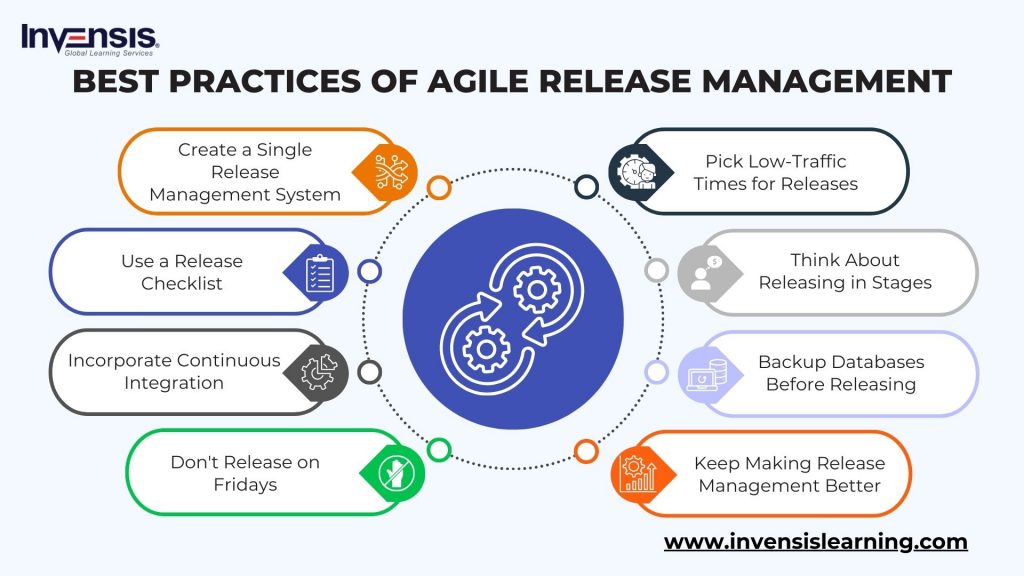
The demand for agile and efficient software development practices has reached unforeseen levels in the current tech-driven landscape. As businesses increasingly embrace Agile methodologies to enhance adaptability and responsiveness, a comprehensive understanding of the Agile release management process becomes imperative.
This blog serves as a timely and indispensable resource, catering to the escalating demand for insights into Agile methodologies.
Whether you’re a project manager striving for seamless releases, a developer navigating iterative development, or a stakeholder seeking to align strategies with modern software deployment practices, this guide is designed to meet the practical demands of today’s dynamic and competitive software development environment.
Table of Contents:
- What is Release Management in Agile?
- What is Agile Release Management Process?
- How Release Management Works?
- Agile Release Management Process Flow
- Importance of Agile Release Management
- Agile Release Management Best Practices
- Conclusion
What is Release Management in Agile?
Release Management in Agile refers to the systematic process of planning, coordinating, and overseeing the deployment of software releases within an Agile development framework.
In Agile methodologies, software development occurs incrementally through iterative cycles or sprints. Release Management ensures that these incremental changes are organized, tested, and delivered efficiently to meet business objectives.
The primary goals of Release Management in Agile include:
- Coordinating the release schedule
- Managing dependencies between different features or components
- Ensuring the quality of the released software through testing
- Delivering value to end-users at regular intervals
This process allows Agile teams to maintain a balance between delivering frequent updates and maintaining a stable and reliable software product. Release Management also involves communication and collaboration among cross-functional teams, stakeholders, and relevant parties to ensure a smooth and successful release.
What is Agile Release Management Process?
The Agile Release Management Process is a set of practices within Agile methodologies that focuses on planning, coordinating, and delivering software releases in a flexible and iterative manner.
Unlike traditional software development approaches that follow a rigid, linear path, Agile release management emphasizes adaptability, collaboration, and continuous delivery.
In the Agile release management process, software development occurs incrementally in short cycles or sprints. The process involves breaking down the development work into small, manageable features or user stories.
These features are then prioritized based on business value, and development teams work on them iteratively. The Agile release management process ensures that a potentially shippable product increment is ready for release at the end of each iteration.
How Release Management Works?
Release management is a comprehensive process to enhance the overall software development lifecycle by systematically addressing planning, building, testing, deploying, and supporting a software release.
The primary objective is to elevate the software development process’s quality, speed, and efficiency. The release management process is divided into various stages, each crucial step ensuring a smooth and effective delivery.
-
Planning
The initial stage centers around meticulous planning, where the scope of the release is defined. This involves identifying the specific features and bug fixes that will be incorporated into the release. A detailed release schedule is crafted during this phase, providing a roadmap for the subsequent stages of the release management process.
-
Preparation
The preparation stage is important. It involves the development of the software, rigorous testing, and preparing the release for deployment. This phase ensures that the software is feature-complete and meets stringent quality standards. Thorough testing is conducted to identify and rectify potential issues, ensuring a stable and reliable product.
-
Execution
The execution phase marks the actual deployment of the software into the production environment. This step involves the implementation of the release plan, updating servers, databases, and any other components necessary for the new release. Successful execution ensures end-users can access the latest features and improvements without disruptions.
-
Monitoring
Post-deployment, the monitoring stage comes into play. This involves monitoring the software’s performance in the live environment. Any issues that surface are promptly addressed to maintain optimal functionality. Continuous monitoring facilitates proactive problem-solving and lays the groundwork for iterative improvements in subsequent releases.
Agile Release Management Process Flow
Similar to the iterative nature of software development, Release Management operates in cycles. Whether it involves launching a new product, introducing subsequent versions, or swiftly addressing bug fixes with an update, every release undergoes a complete release management lifecycle.
Release Management Cycle
A release management cycle denotes the series of activities and processes dedicated to overseeing the launch of software or product updates. It encompasses diverse stages, starting from the initial planning phase and extending through final deployment and monitoring.
-
Requesting for Changes or New Features
In the initial phase of the release management lifecycle, identifying the need for changes or including new features plays a pivotal role. This demand may emanate from diverse sources, such as valuable insights derived from customer feedback, evolving market trends, or internal organizational needs that necessitate enhancements to the existing software or the introduction of innovative features.
-
Planning Release Schedule
With changes or new features pinpointed, meticulous planning is essential to create a structured release schedule. This schedule acts as a comprehensive roadmap, delineating key milestones for various release phases, including beta releases, production releases, and maintenance releases. This strategic planning ensures a well-coordinated and predictable timeline for the entire release process.
-
Scheduling Solution Release
To maintain a harmonious development environment and prevent conflicts, the careful scheduling of individual teams’ work becomes imperative. This step ensures that the release of each team’s contributions is well-coordinated, fostering smooth integration and minimizing disruptions to the production environment.
-
Managing Infrastructure Configuration
In this phase, the configuration management for applications, topology, and infrastructure takes center stage. Activities such as setting up servers, configuring databases, and deploying code are executed precisely, contributing to establishing a stable and optimized environment for the upcoming release.
-
Determining Production Readiness
A critical checkpoint in the release management process involves a final review before deployment. This step considers any new information or changes that may have occurred since the release schedule was initially created. This meticulous assessment ensures that the release is thoroughly vetted for success, aiming to eliminate unforeseen surprises during the deployment phase.
-
Testing
A fundamental aspect of the release management lifecycle is the comprehensive testing of the software. This crucial step, conducted manually or using sophisticated automated testing tools, aims to identify and rectify potential bugs. The objective is to ensure the software’s robustness, reliability, and functionality before it reaches the production environment.
-
Deployment
The culmination of the release management lifecycle occurs during the deployment phase, where the software transitions from the development environment to production. This transition can be executed manually or with automated deployment tools to achieve a seamless and error-free release.
-
Supporting Delivery Teams
Supporting delivery teams becomes paramount during the pivotal moments of deployment and testing. This support may encompass technical assistance, addressing queries, and promptly resolving problems. The objective is to facilitate a smooth and successful release while ensuring the delivery teams have the necessary resources and guidance.
-
Issue Reporting and Collection
Post-release, the focus shifts to meticulous documentation and information gathering regarding any problems encountered. This data is instrumental in the systematic tracking of bugs, identifying trends, and informing continuous improvement efforts for future releases. The insights gathered during this phase contribute to an ongoing refinement cycle, enhancing the overall efficiency and effectiveness of subsequent releases.
Importance of Agile Release Management
The importance of Agile Release Management stems from its critical role in optimizing and enhancing the software development process within an Agile framework. Key aspects that underscore its significance include:
- Iterative Value Delivery: Ensures a continuous and incremental delivery of valuable features, allowing for swift responses to changing requirements
- Adaptability and Flexibility: Facilitates seamless adaptation to changes, enabling development teams to incorporate feedback and make adjustments throughout the cycle
- Collaborative Environment: Promotes collaboration among diverse teams, stakeholders, and end-users, fostering ongoing communication for project alignment
- Mitigation of Project Risks: Through incremental releases, Agile Release Management minimizes risks associated with large-scale deployments, identifying and resolving issues early
- Elevated Quality Assurance: Integrated testing practices in Agile Release Management ensure that each release meets predefined quality standards, enhancing overall software quality
- Predictable Release Cycles: Establishes consistent and predictable release cycles, aiding in resource planning and allowing stakeholders to anticipate new feature deliveries
- Enhanced Customer Satisfaction: Frequent and incremental releases contribute to higher customer satisfaction, keeping stakeholders engaged and allowing for quick adjustments based on user feedback
- Optimized Resource Management: Breaking down the development process into manageable increments optimizes resource utilization, enabling teams to focus on specific features during each iteration
Agile Release Management Best Practices
Best Practices in Agile release management encompass strategies and principles designed to optimize the planning, execution, and delivery of software releases within an Agile development framework. These practices aim to enhance collaboration, flexibility, and efficiency throughout the release management process. Here are key Agile release management best practices:
- Create a Single Release Management System: Develop a standardized process for handling releases to ensure consistency and efficiency in the release lifecycle
- Use a Release Checklist: Implement a checklist to prevent oversights, ensuring a comprehensive approach to each release and minimizing the risk of errors
- Incorporate Continuous Integration: Emphasize regular code integration to ensure consistent testing and minimize potential issues during the release
- Don’t Release on Fridays: Avoid releasing on Fridays to promptly address any unforeseen issues during the workweek and reduce potential disruptions
- Pick Low-Traffic Times for Releases: Schedule releases during low-traffic periods to minimize the impact on users and ensure a smoother transition
- Think About Releasing in Stages: Consider staged rollouts to introduce new software gradually, allowing for progressive issue monitoring and resolution
- Backup Databases Before Releasing: Create backups of databases before deployment to safeguard against data loss or corruption, ensuring the ability to restore data if needed
- Keep Making Release Management Better: Foster a culture of continuous improvement by regularly assessing and refining the release process to enhance efficiency and adapt to project needs
Conclusion
Our guide to Agile release management provides valuable insights into the intricacies of managing software releases within an Agile framework. Emphasizing collaboration, adaptability, and iterative value delivery, mastering these practices is crucial for efficiently delivering high-quality software that aligns with evolving business needs.
As organizations embrace Agile methodologies, a proficient understanding of the Agile release management process becomes not just a best practice but a strategic necessity for staying competitive in the dynamic world of software development.
Unlock the power of Agile release management with Invensis Learning’s AgilePM Certification courses. Elevate your project management skills, embrace adaptability, and lead successful software releases. Enroll now to stay ahead in the dynamic world of Agile development.


















